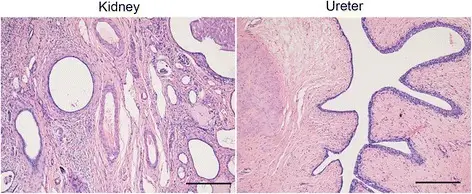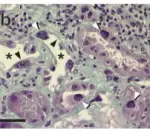Multicystic renal dysplasia is a variant of renal dysplasia, most frequently recognized congenital anomalies to the urinary tract.
What is the Pathology of Multicystic Renal Dysplasia?
The pathology of multicystic renal dysplasia is:
-Etiology: The cause of multicystic renal dysplasia is a congenital, genetic factor.
-Genes involved: EYA1, SIX1 genes
-Pathogenesis: The sequence of events that lead to multicystic renal dysplasia results as a sporadic problem, familiar occurrence reported, EYA1 or SIX1 genes gene mutations in ureteric bud development.
-Morphology: The morphology associated with multicystic renal dysplasia shows the kidney is enlarged and abnormally shaped, irregularly sized cysts.
-Histology: The histology associated with multicystic renal dysplasia shows fibrous tissue stroma.
How does Multicystic Renal Dysplasia Present?
Patients with multicystic renal dysplasia typically slightly higher in males present at the age range of childhood. The symptoms, features, and clinical findings associated with multicystic renal dysplasia include flank abdominal mass, respiratory distress, voiding dysfunction, and hypertension,
How is Multicystic Renal Dysplasia Diagnosed?
Multicystic renal dysplasia is diagnosed in laboratory studies such as urinalysis, creatinine levels, electrolytes levels, and blood pressure. Imaging studies such as renal ultrasonography, voiding cystourethrography, dimercaptosuccinic acid (DMSA) renal scanning, and intravenous pyelography.
How is Multicystic Renal Dysplasia Treated?
Multicystic renal dysplasia is treated by symptomatic management.
What is the Prognosis of Multicystic Renal Dysplasia?
The prognosis of multicystic renal dysplasia is fair. Depends on whether the involvement is unilateral or bilateral.



